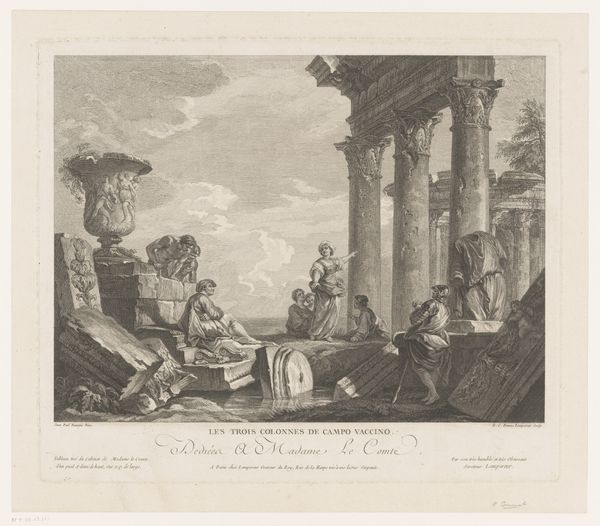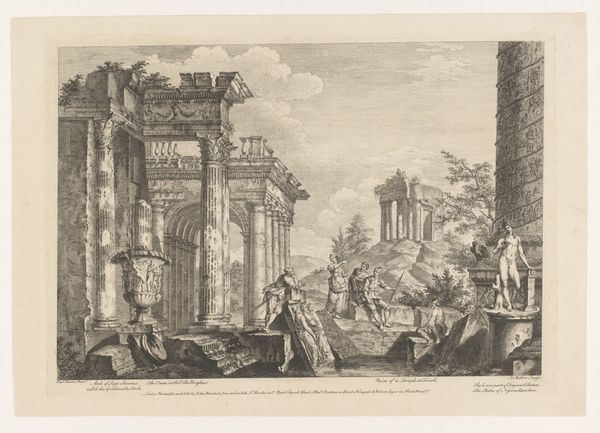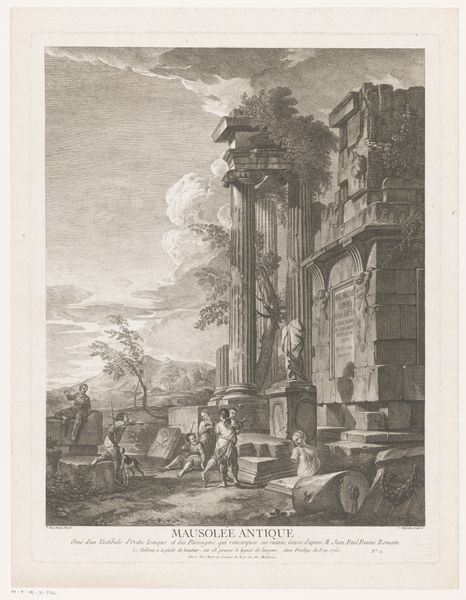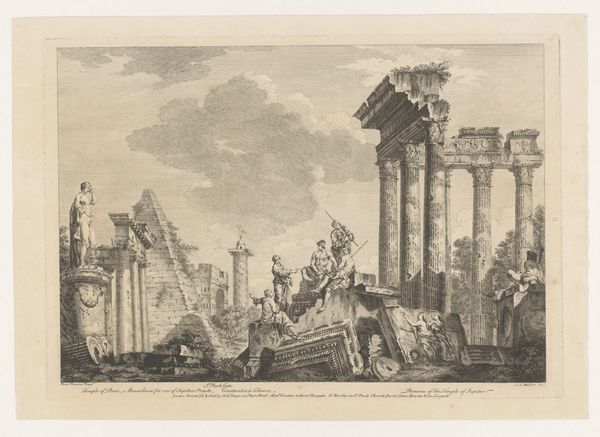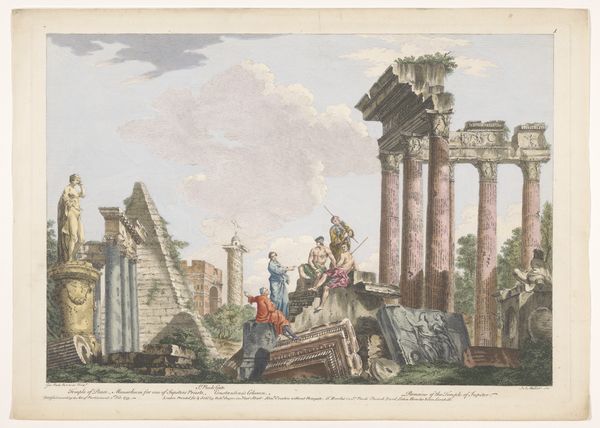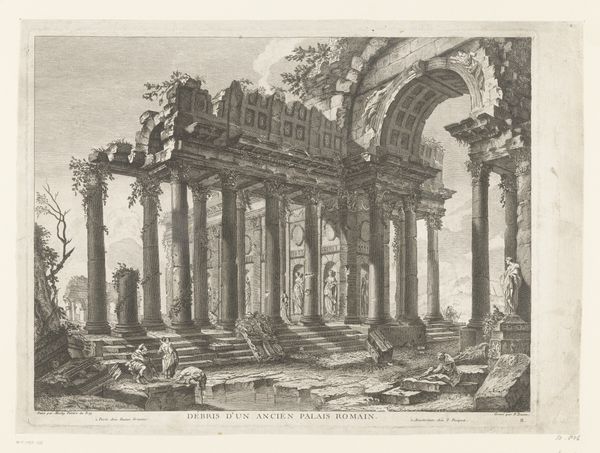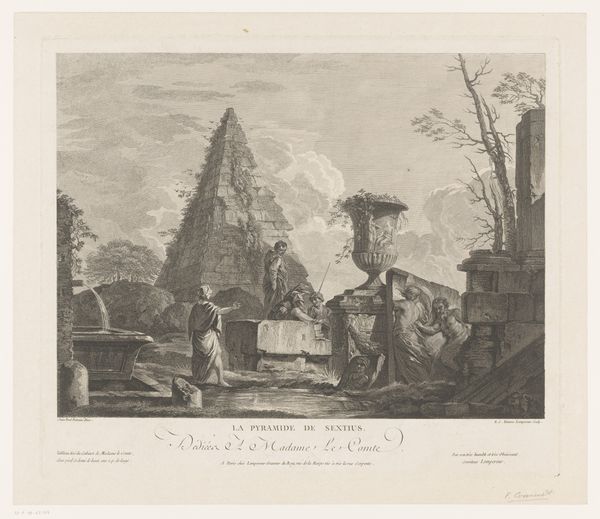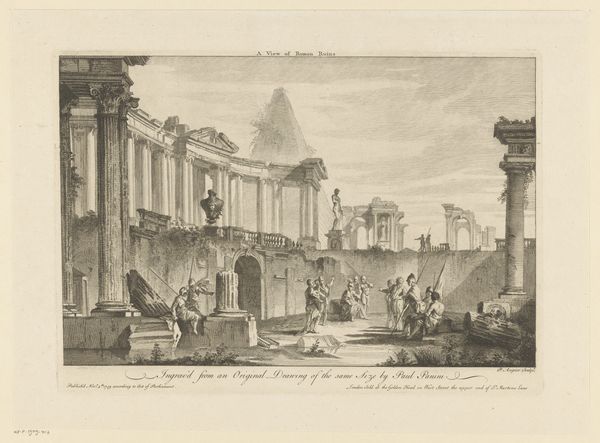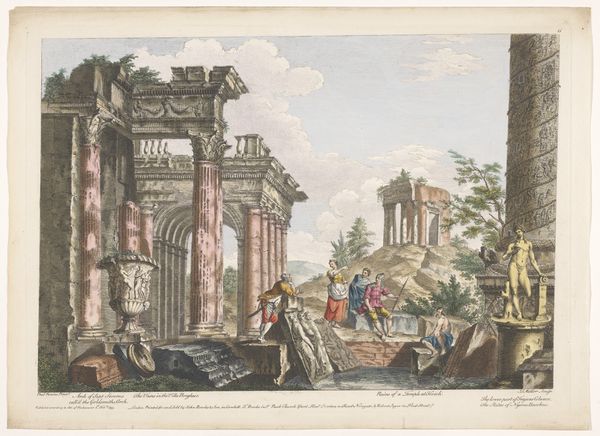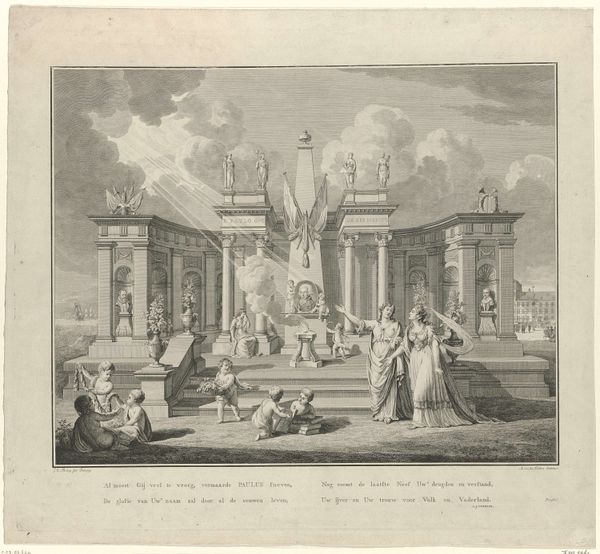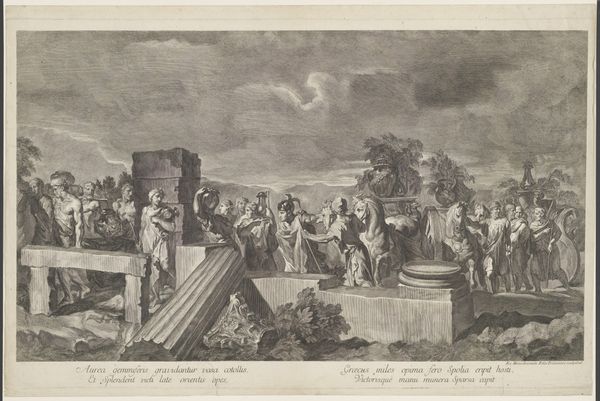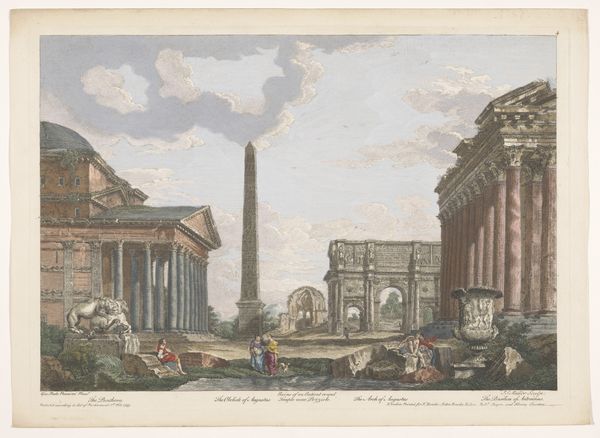
print, engraving, architecture
#
neoclacissism
# print
#
landscape
#
classical-realism
#
figuration
#
history-painting
#
engraving
#
architecture
Dimensions: height 449 mm, width 544 mm
Copyright: Rijks Museum: Open Domain
Curator: This engraving by Pierre François Tardieu, created between 1754 and 1771, is titled "Ruins in the Peloponnese with Figures". It offers a glimpse into how 18th-century artists viewed and interpreted classical antiquity. Editor: There's a melancholy beauty here, like stumbling upon forgotten greatness. The detail is incredible – you can almost hear the wind whispering through those crumbling columns. The figures seem small and almost theatrical amid such colossal wreckage. Curator: Absolutely. The image is rich with symbolism reflecting the Neoclassical movement’s obsession with the perceived virtues and lessons of antiquity, the figures a romantic rumination of ancient civilization set amidst idealized ruins. Editor: Ideals always come crashing down, don't they? The broken pieces make me think of lost empires and fading memories. There’s something almost existential in that lone figure reaching up, like asking why the heavens allow it. Curator: Precisely. The location depicted, the Peloponnese, held great historical significance as the site of Mycenae and Sparta. This was, in a sense, a visual elegy for the cradle of Western civilization, prompting the viewer to reflect on time, change, and the transient nature of power. Editor: The light really sets a contemplative mood too, doesn’t it? A soft, filtered light like memory itself, with all the sharp edges worn smooth, like the very ruins it depicts. Curator: We must consider that engravings such as these served not only as artistic expressions but also as important vehicles for disseminating knowledge about classical sites to a broader audience that was unable to travel and study them directly. This artwork is thus equally artifact as well as document. Editor: It's strange to think something broken can create something so lovely, or remind us so profoundly of what matters. I get a similar feeling from looking at abstract expressionism... Curator: Well said, very insightful indeed. Editor: Indeed! Let’s wander into the next room!
Comments
No comments
Be the first to comment and join the conversation on the ultimate creative platform.
